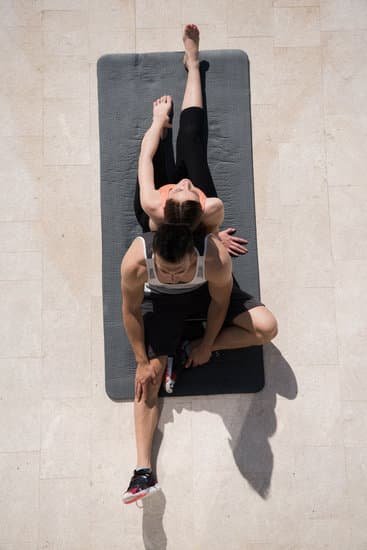Childhood obesity and sedentary lifestyles have become increasingly more prevalent in today’s society. As a result, there is an urgent need to prioritize youth fitness and encourage children to lead active and healthy lives. This is where youth fitness challenges come into play. These challenges provide young individuals with a fun and engaging way to improve their physical fitness while instilling lifelong habits of exercise and well-being.
In this article, we will delve into the importance of prioritizing youth fitness and explore the common obstacles faced when trying to encourage young individuals to embrace an active lifestyle. We will also discuss how to design effective youth fitness challenges that yield positive results. Furthermore, real-life success stories and testimonials from youth participants will be shared, showcasing the impact that these challenges can have on the lives of young individuals.
Additionally, practical tips for organizing a successful youth fitness challenge will be provided along with strategies to engage and motivate participants throughout the duration of the challenge. Metrics and tools for measuring progress will also be explored, ensuring that organizers can effectively evaluate the success of their initiatives. Finally, we will discuss ways to promote your youth fitness challenge and reach a wider audience to make an even greater impact on the health and wellness of today’s young generation.
Through this article, readers will gain valuable insight into the need for youth fitness challenges as well as guidance on how to implement these challenges successfully. We hope that by nurturing a passion for fitness in today’s youth, we can empower them to lead healthy lifestyles both now and in their future endeavors.
The Importance of Prioritizing Youth Fitness
Physical fitness is not just important for adults; it is equally crucial for the youth. In this section, we will delve into the significance of prioritizing youth fitness and why it matters.
Physical Health and Well-being
Encouraging and prioritizing youth fitness helps in promoting physical health and well-being among young individuals. Regular exercise and physical activity are key components of a healthy lifestyle and can help prevent various health issues such as obesity, cardiovascular diseases, diabetes, and hypertension. By engaging in physical activities at a young age, children can develop strong muscles and bones, improve their flexibility and balance, manage their weight effectively, boost their immune system, and enhance overall physical health.
Mental Health Benefits
Youth fitness is not just about physical health; it also has significant mental health benefits. Physical activity has been proven to reduce symptoms of anxiety and depression in young individuals.
Regular exercise stimulates the release of endorphins – feel-good hormones – which elevate mood and improve mental well-being. Engaging in physical activities also helps children cope with stress better, boosts self-esteem and confidence levels, enhances cognitive function, sharpens memory skills, improves concentration levels, promotes better sleep patterns, and reduces the risk of developing mental health disorders.
Building Healthy Habits for Life
Prioritizing youth fitness instills healthy habits that last a lifetime. When children engage in regular physical activity from an early age, they are more likely to carry these habits into adulthood.
Teaching them about the importance of staying active lays a solid foundation for a lifetime commitment to maintaining good physical fitness and overall well-being. Youth fitness challenges provide an opportunity to introduce children to various types of physical activities such as sports, dance, yoga, or group exercises that they may enjoy and continue practicing as they grow older.
Common Obstacles in the Path to Youth Fitness
Lack of Physical Activity
One of the most common obstacles in the path to youth fitness is a lack of physical activity. With the rise of technology and sedentary lifestyles, many young people are spending more time indoors engaging in activities that involve minimal movement. This lack of physical activity can contribute to weight gain, decreased cardiovascular health, and overall poor fitness levels. Additionally, some children may face barriers to physical activity due to limited access to safe outdoor spaces or lack of transportation.
Unhealthy Eating Habits
Another significant challenge for youth fitness is unhealthy eating habits. Many young people today consume diets that are high in processed foods, sugary drinks, and snacks low in nutritional value. These poor eating habits can lead to weight gain, nutritional deficiencies, and increased risk for chronic diseases such as diabetes and heart disease. Furthermore, busy schedules and reliance on convenience foods often result in a lack of proper meal planning and portion control.
Peer Pressure and Social Influences
Peer pressure and social influences can also hinder youth fitness efforts. Young people may feel pressured by their peers to participate in sedentary activities or engage in unhealthy behaviors such as smoking or excessive alcohol consumption. Societal pressures related to body image standards can also impact a young person’s willingness to participate in physical activities if they feel self-conscious about their appearance or abilities compared to others.
Identifying these common obstacles is essential for addressing them effectively and designing strategies that help overcome these challenges. By understanding the specific barriers faced by youth when it comes to fitness, we can tailor initiatives that promote healthier lifestyles and empower young people to make positive choices for their well-being.
Designing an Effective Youth Fitness Challenge
Setting Clear Goals and Objectives
When designing a youth fitness challenge, it is essential to establish clear goals and objectives. This will provide a roadmap for the challenge and help participants understand what they are working towards. The goals should be specific, measurable, achievable, relevant, and time-bound (SMART).
For example, a goal could be for participants to improve their cardiovascular endurance by running one mile in under 10 minutes by the end of the challenge. By setting clear goals and objectives, participants will have a sense of purpose and direction throughout the challenge.
Creating Age-Appropriate Challenges
One key aspect of designing an effective youth fitness challenge is to create age-appropriate challenges. It is important to consider the developmental stages and physical capabilities of the participants when determining the exercises or activities involved in the challenge. For younger children, activities such as obstacle courses or relay races can be engaging and fun.
Older participants may benefit from more structured workouts that focus on strength training or endurance. By tailoring the challenges to suit each age group, you can ensure that all participants can actively participate and have a positive experience.
Incorporating Variety and Fun
To keep participants motivated and engaged throughout the youth fitness challenge, it is crucial to incorporate variety and make it enjoyable. Include a mix of different activities such as team sports, individual exercises, outdoor adventures, or even dance workouts. By offering diverse options, you cater to different interests and abilities while keeping boredom at bay.
Additionally, experimenting with different formats like friendly competitions or partner challenges can add an element of excitement and camaraderie among participants. Remember that making the youth fitness challenge fun will encourage long-term adherence to an active lifestyle beyond the duration of the challenge.
By following these tips for designing an effective youth fitness challenge, organizers can create an engaging program that promotes physical activity among young individuals. It is important to prioritize clear goals and objectives, create age-appropriate challenges, and incorporate variety and fun to enhance participants’ experience. The next section will explore the benefits of youth fitness challenges, emphasizing the positive impact they can have on the overall well-being of young individuals.
Benefits of Youth Fitness Challenges
Youth fitness challenges offer numerous benefits that can make a positive impact on the lives of young individuals. Engaging in these challenges not only improves physical health but also promotes mental and emotional well-being. By participating in structured fitness activities, young people can develop important life skills while fostering a lifelong passion for fitness.
One of the primary benefits of youth fitness challenges is improved physical health. Regular physical activity helps strengthen muscles, increase endurance, and improve cardiovascular health. It also reduces the risk of obesity and related health conditions such as diabetes and high blood pressure. According to the World Health Organization (WHO), children and adolescents should engage in at least 60 minutes of moderate to vigorous physical activity every day to maintain good health.
In addition to physical benefits, youth fitness challenges have a positive impact on mental and emotional well-being. Physical activity stimulates the release of endorphins, which are known as “feel-good” hormones. This can help reduce stress, elevate mood, and improve overall mental well-being among young participants. Regular exercise has also been linked to increased self-esteem and better academic performance, contributing to a holistic development of young individuals.
| Benefit | Description |
|---|---|
| Improved Physical Health | Regular physical activity strengthens muscles, increases endurance, improves cardiovascular health, reduces the risk of obesity-related diseases. |
| Enhanced Mental Well-Being | Physical activity stimulates the release of endorphins, reduces stress levels, elevates mood, contributes to increased self-esteem. |
| Better Emotional Well-Being | Youth fitness challenges provide opportunities for social interaction, friendship building, and emotional support from peers. |
Furthermore, youth fitness challenges can contribute to better emotional well-being. Participating in these challenges provides opportunities for social interaction, friendship building, and emotional support from peers. This sense of community creates a supportive environment where young individuals can share their experiences and motivate each other to achieve their fitness goals. It also fosters teamwork and cooperation, teaching important life skills that are transferable beyond the realm of fitness.
To summarize, youth fitness challenges offer a wide range of benefits that make a positive impact on young people’s lives. They improve physical health, enhance mental well-being, and contribute to better emotional well-being by fostering a sense of community and promoting important life skills. By participating in structured fitness activities, youth develop healthy habits early on and are more likely to continue practicing them throughout their lives.
Inspiring Success Stories
Real-life testimonials from youth participants in a fitness challenge can be incredibly motivating and inspiring for others considering taking part. These success stories provide concrete proof that participating in a youth fitness challenge can have a positive impact on young people’s lives. Hearing about the experiences and achievements of their peers can encourage more youth to get involved and strive for their own success.
One powerful way to showcase these inspiring success stories is through video testimonials. Creating short videos featuring youth participants who have achieved significant fitness milestones or overcome obstacles can be incredibly impactful.
These videos can be shared on social media, websites, or even during promotional events for the fitness challenge. By visually seeing the transformations and hearing firsthand accounts of how participating in the challenge has positively affected their lives, potential participants may feel more motivated and excited to take part.
In addition to video testimonials, written success stories can also be effective in inspiring others. These stories could highlight specific challenges that participants faced, how they overcame them, and the results they achieved as a result of their commitment and dedication to the fitness challenge. Sharing these stories on websites, blogs, or in promotional materials allows potential participants to see themselves in these narratives and envision their own success.
Including quotes from successful youth participants throughout promotional materials or articles can also serve as inspiration for others. For example, a quote from a participant who credits the fitness challenge with boosting their confidence or improving their overall well-being can resonate with other young people who may be experiencing similar struggles.
Inspiring success stories from real-life youth participants are an essential component of promoting a youth fitness challenge. They serve as proof that participating in such challenges can lead to positive outcomes and motivate others to get involved. Whether through videos, written stories, or quotes, sharing these testimonials helps build excitement and encourages more young people to embark on their own fitness journeys.
- Feature inspiring video testimonials of youth participants.
- Showcase written success stories of youth participants.
- Include quotes from successful youth participants in promotional materials.
Practical Tips for Organizing a Youth Fitness Challenge
Organizing a youth fitness challenge can be a rewarding experience that positively impacts the lives of young participants. To ensure a successful event, it is important to have a well-organized plan in place. Here are some practical tips for organizing a youth fitness challenge:
- Define the goals and objectives: Before you start planning, clearly define the goals and objectives of your youth fitness challenge. Are you aiming to improve overall fitness levels, promote healthy habits, or create a fun and engaging environment for youth? By having a clear focus, you can design activities and programs that align with your objectives.
- Choose appropriate activities: Consider the age group and fitness levels of the participants when selecting activities for your fitness challenge. Incorporate both cardiovascular exercises, such as running or jumping rope, and strength-building exercises like bodyweight training or resistance band workouts. Providing a variety of activities will keep participants engaged and cater to different interests and abilities.
- Establish a timeline: Create a timeline outlining the key milestones leading up to the event. Begin with setting a date for your youth fitness challenge and work backwards to determine when registration opens, deadlines for submitting forms, participant orientation sessions, practice sessions if needed, and the day of the event itself. Make sure to allow sufficient time for promotion and participant recruitment.
- Recruit volunteers: Organizing a youth fitness challenge can be overwhelming without enough help. Recruit volunteers who can assist with tasks such as registration and check-in, managing zones during the event, guiding participants through activities, providing first aid if necessary, and ensuring overall safety at all times.
- Secure necessary resources: Determine what resources you will need for your fitness challenge such as equipment (e.g., cones, jump ropes), venue rental (if applicable), refreshments/snacks for participants, prizes/awards for winners or participants who achieve specific milestones,youth Fitness professionals/facilitators if required etc., It is essential to secure these resources well in advance to ensure a smooth and successful event.
By following these practical tips, you can organize a youth fitness challenge that is effective, engaging, and impactful. Stay tuned for the next section where we will discuss strategies to engage and motivate youth participants throughout the challenge.
Engaging and Motivating Youth in the Fitness Challenge
One of the key factors in the success of a youth fitness challenge is the ability to keep participants engaged and motivated throughout the program. Without proper guidance and encouragement, many young individuals may lose interest or give up on their fitness goals. Therefore, it is crucial to implement effective strategies that foster excitement and maintain motivation among youth participants.
One strategy to engage and motivate youth in the fitness challenge is by incorporating fun and interactive activities into the program. This can include group workouts, team challenges, or even friendly competitions. By making fitness enjoyable, participants are more likely to stay committed and enthusiastic about their progress.
Additionally, providing rewards or incentives can also be highly effective in keeping them excited. Rewards can range from small tokens such as badges or certificates for reaching milestones to larger prizes for top performers.
Another important aspect of engaging youth in a fitness challenge is ensuring that they feel included and part of a community. Creating a supportive environment where participants feel comfortable expressing themselves and sharing experiences with others can significantly enhance their motivation.
This can be achieved through regular check-ins, virtual or in-person meetups, and online platforms where participants can interact with one another. Building a sense of camaraderie amongst the youth will not only keep them engaged but also provide them with a support system to lean on during challenging times.
Furthermore, adopting age-appropriate exercises and fitness routines is essential when motivating youth in a fitness challenge. It is important to consider their abilities, interests, and developmental stage when designing workouts. Customizing exercises based on individual needs will not only prevent boredom but also ensure that participants feel challenged yet successful in their efforts. Incorporating variety into the program such as different workout styles or trying new activities regularly will also help sustain interest and motivation.
By implementing these strategies, organizers can create an engaging and motivating environment for youth participating in a fitness challenge. When young individuals feel excited, supported, and acknowledged for their efforts, they are more likely to stay committed and develop a lifelong passion for fitness. Moreover, a positive and engaging experience will inspire them to share their journey with others and encourage peers to join future youth fitness challenges.
| Strategies to Engage and Motivate Youth in the Fitness Challenge |
|---|
| Incorporate fun and interactive activities into the program |
| Create a supportive community where participants feel included |
| Adopt age-appropriate exercises and fitness routines |
Evaluation and Tracking Progress
In order to ensure the success of a youth fitness challenge, it is essential to have a system in place for evaluating and tracking the progress of participants. This section will discuss the important metrics and tools that can be used to measure the success of a youth fitness challenge.
One key metric to consider when evaluating the success of a youth fitness challenge is attendance. Keeping track of how many participants consistently attend the challenge sessions can give insight into their commitment and dedication to improving their fitness. Additionally, tracking attendance can help organizers identify any patterns or trends among participants and make adjustments as needed.
Another metric to focus on is individual progress. It is important to give participants a way to track their own progress throughout the challenge. This can be done through tools such as fitness trackers or journals where participants can record their workouts, measurements, and other relevant data. By having these tangible records, participants can see how far they have come in their fitness journey and stay motivated to continue pushing themselves.
In addition to individual progress, it is also important to measure overall program impact. This can be done through surveys or questionnaires that assess participants’ satisfaction with the program, changes in their attitude towards physical activity, and any improvements in their overall health and well-being. Collecting this data allows organizers to continuously improve and refine the program based on participant feedback.
Overall, using a combination of attendance records, individual progress tracking tools, and program evaluation surveys can provide valuable insights into the success of a youth fitness challenge. These metrics and tools not only help organizers continually improve the program but also serve as motivators for participants to stay engaged and committed to their own fitness goals.
| Metric | Description |
|---|---|
| Attendance | Number of participants consistently attending challenge sessions |
| Individual Progress | Participants tracking their own progress through fitness trackers, journals, etc. |
| Program Impact | Satisfaction surveys and questionnaires assessing changes in attitudes, health, and well-being of participants |
Spreading the Word
Once you have designed an effective youth fitness challenge, it is important to spread the word and promote it in order to reach as many participants as possible. Effective promotion can help generate excitement and interest, increasing the number of youth who take part in the challenge. Here are some practical tips for promoting your youth fitness challenge:
- Utilize Social Media: In today’s digital age, social media platforms such as Facebook, Instagram, and Twitter are powerful tools for promoting events. Create dedicated pages or accounts for your youth fitness challenge and regularly post updates, photos, and videos about the challenge. Encourage participants to share their experiences using hashtags specific to the challenge.
- Partner with Schools and Community Organizations: Reach out to local schools, community centers, sports clubs, and other organizations that work with youth. Offer to provide informational sessions or workshops about the youth fitness challenge and its benefits. Provide them with promotional materials such as posters or brochures that they can distribute to students.
- Involve Local Media: Contact local newspapers, radio stations, and television channels to see if they would be interested in covering your youth fitness challenge as a news story or feature. Offer interviews with organizers or testimonials from previous participants to make it more engaging.
- Collaborate with Local Businesses: Partnering with local businesses can offer mutually beneficial opportunities for promotion. Seek sponsorships from health clubs, fitness equipment stores, nutrition shops, and sporting goods stores that align with the goals of your youth fitness challenge. In exchange for their support, display their signage at the event or include their logos on promotional materials.
- Engage Influencers: Identify local influencers who have a strong online presence in health and wellness or who are advocates for children’s health and physical activity. By having them endorse your youth fitness challenge on their social media platforms or through blog posts, you can tap into their followers and reach a wider audience.
Promoting your youth fitness challenge is key to its success. By using social media, partnering with schools and community organizations, involving local media, collaborating with local businesses, and engaging influencers, you can maximize your reach and get more participants excited about taking part in the challenge. Remember to measure the impact of each promotional strategy to determine what works best for reaching your target audience.
Conclusion
In conclusion, youth fitness challenges have proven to be a powerful tool in nurturing a lifelong passion for fitness in today’s youth. By prioritizing youth fitness and designing effective challenges, we can help overcome common obstacles and provide young people with the motivation and support they need to succeed.
One of the key benefits of youth fitness challenges is the positive impact it has on participants. Not only do these challenges improve physical health and fitness levels, but they also promote mental well-being and self-confidence. Through engaging and motivating strategies, young people are encouraged to push themselves beyond their comfort zones, leading to personal growth and development.
Real-life success stories from youth participants serve as inspiration for others considering joining a fitness challenge. These testimonials highlight the transformative effects that these challenges can have on young individuals. By sharing these stories and showcasing the achievements of past participants, we can further encourage more young people to take part in such programs.
Organizing a youth fitness challenge may seem overwhelming at first, but with practical tips and a step-by-step guide, it becomes more manageable. It is crucial to evaluate and track progress throughout the challenge using metrics and tools. This not only helps measure success but also provides feedback for improvement in future iterations of the challenge.
To truly maximize the impact of a youth fitness challenge, spreading the word is essential. Promoting your challenge through various channels such as social media, schools, community centers, and local organizations can help reach a wider audience and attract more participants.
Overall, by investing in our young generation’s physical well-being through engaging challenges and providing ongoing support, we are nurturing their lifelong passion for fitness. Creating opportunities for them to develop healthy habits now will not only benefit them personally but also contribute to building healthier communities in the future. Let us continue working together to inspire today’s youth towards an active lifestyle that will positively shape their lives for years to come.

Passionate about providing useful information to anyone with an interest in the field of Personal Training, I strive to pass on to our readers quality information and to answer any questions about Personal Trainers, the work they do and how to become one.





